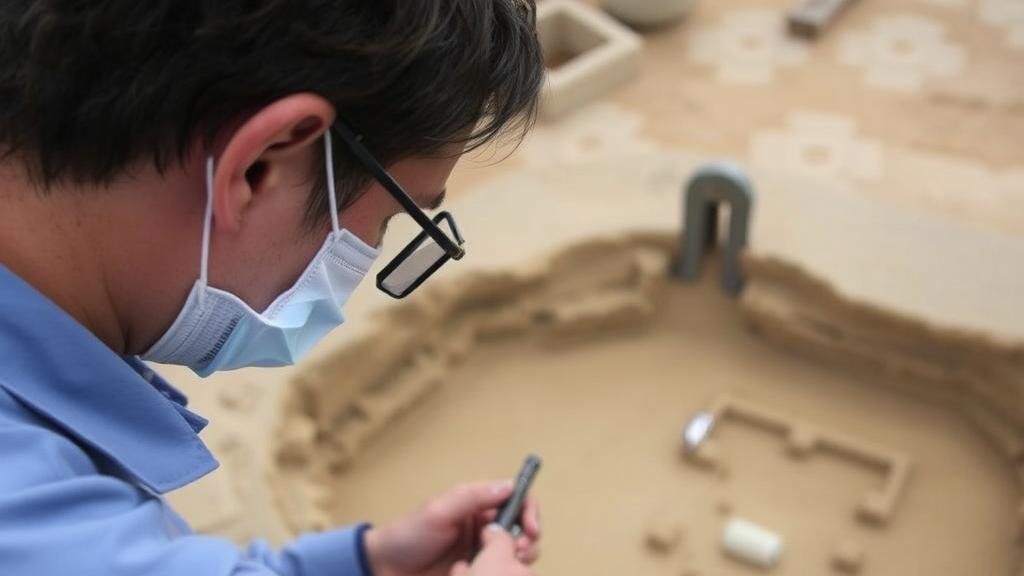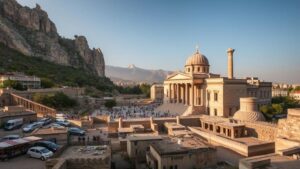Investigating how seismic activity has uncovered buried civilizations.
Investigating How Seismic Activity Has Uncovered Buried Civilizations
Seismic activity, often perceived as a natural disaster, can paradoxically serve as a key to unlocking the secrets of buried civilizations. Earthquakes and other geological movements have exposed ancient structures, artifacts, and urban layouts, providing archaeologists with invaluable insights into historical human societies. This article explores notable instances where seismic events have revealed lost civilizations, along with the methods used in these explorations.
Historical Context: Earthquakes and Archaeology
Throughout history, seismic events have shaped not only landscapes but also the course of human civilization. relationship between these movements of the Earth and the architectural responses of ancient cultures has often been profound. For example, the city of Pompeii was buried under volcanic ash from the eruption of Mount Vesuvius in 79 A.D., revealing insights into Roman life when excavated. Similarly, seismic activity has contributed to the discovery of other ancient sites.
Notable Discoveries: Case Studies
Several key examples illustrate how seismic activity has brought hidden civilizations to light:
- Earthquake in San Francisco, 1906: Following the devastating 1906 earthquake, extensive excavations in San Francisco unearthed remnants of the citys Gold Rush-era architecture, including buried streets and buildings that provided perspective on the rapid growth and subsequent urban strategies in the late 19th century.
- Greeces 1999 Athens Earthquake: This event led to unearthing ancient structures in the area around the Acropolis. Archaeologists discovered remains of a significant settlement that predated known historical records, revealing long-lost details about Athenian life circa 400 BCE.
- 2003 Bam Earthquake in Iran: The catastrophic earthquake exposed ancient mud-brick buildings and artifacts dating back to the 6th century BC in Bams historic citadel, shedding light on ancient Persian urban planning and construction techniques.
Scientific Techniques: How Discoveries Are Made
Seismology plays a crucial role in understanding and locating buried sites. Researchers leverage various scientific techniques to analyze seismic data, which can highlight anomalies in the Earth’s subsurface. Some of the methods include:
- Ground-penetrating radar (GPR): This technology uses radar pulses to image the subsurface and can pinpoint features like walls, graves, and structures.
- Remote sensing: Satellite imagery and aerial photography are utilized to detect changes in terrain that may indicate human activity below.
- Seismic surveys: These surveys assess the properties of underground materials, allowing archaeologists to extrapolate information about hidden structures.
The Role of Technology in Modern Archaeology
Advancements in technology have transformed the field of archaeology, particularly in how seismic activity is analyzed. High-resolution imaging and data analytics have enabled researchers to create detailed maps of previously hidden settlements. For example, LiDAR (Light Detection and Ranging) technology has been instrumental in uncovering ancient Maya cities cloaked by dense vegetation in the jungles of Central America, significantly leading to the understanding of their complex societal structures.
Ethical Considerations and Future Implications
While seismic events can unveil buried civilizations, ethical considerations must guide excavation efforts. It is crucial to respect cultural heritage and involve local communities in the research process to ensure that findings contribute positively to shared histories and education.
Plus, as climate change and urban development continue to reshape the Earth, the potential for seismic activity to reveal lost civilizations requires careful monitoring and strategic planning. Continued collaboration between seismologists, archaeologists, and urban planners will help preserve these inevitable discoveries for future generations.
Conclusion: Unveiling the Past Through Natures Force
Seismic activity serves as both a natural challenge and a unique opportunity in archaeology. As demonstrated through various historical examples and modern research methods, the Earths movements can reveal invaluable remnants of ancient civilizations that may otherwise remain hidden. By understanding and leveraging these discoveries responsibly, we can gain profound insights into our shared human past.
Actionable Takeaways:
- Stay informed about archaeological findings in your region that may result from seismic activity.
- Support local archaeological initiatives that promote the preservation of cultural heritage.
- Participate in or attend community discussions on natural disaster preparedness that include historical context.



